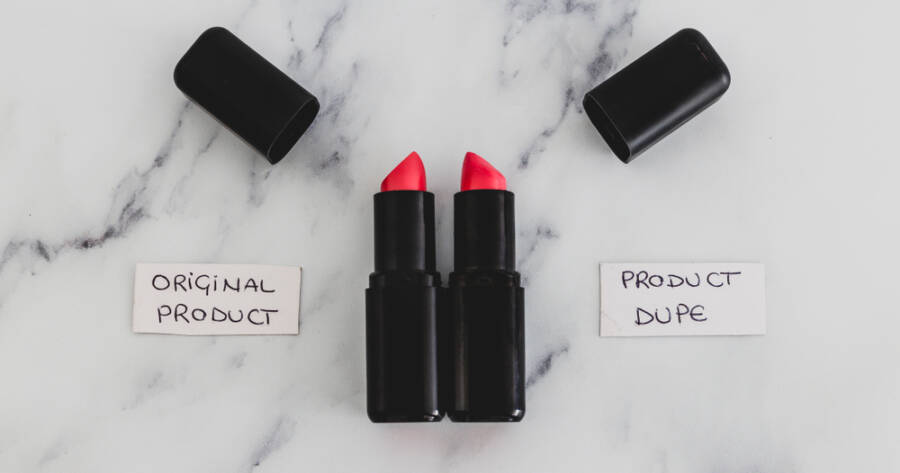Gone are the days when name-brand logos were everything. In today’s fast-moving, budget-conscious shopping world, more and more consumers are turning their attention to “dupes”—high-quality, affordable alternatives that deliver the look, feel, or function of luxury items without the hefty price tag.
From beauty and fashion to home goods and tech, the “dupe economy” is booming—and social media has a lot to do with it. Whether it’s a $10 lipstick that rivals a designer favorite or a $40 throw that mimics a $300 version from a luxury brand, shoppers are learning they can have style and performance without blowing their budgets.
Here’s a closer look at why dupes are winning over consumers, where to find them, and how to shop smart in a marketplace where alternatives are now celebrated, not scorned.
What Is a Dupe, Exactly?
Short for “duplicate,” a dupe is a product that closely resembles a more expensive or popular item—either in appearance, ingredients, or performance—but costs significantly less. Dupes don’t claim to be exact replicas or counterfeit versions; they’re legal, accessible alternatives created by different brands that offer similar results or aesthetics.
Think of them as the savvy shopper’s secret weapon: same vibe, smaller price tag.
Why Dupes Are Trending Right Now
Several factors have helped elevate dupes from budget buys to trendsetters in their own right:
1. Economic pressure
With rising inflation and tighter budgets, shoppers are more value-conscious than ever. Dupes allow consumers to enjoy the look and feel of premium products without financial guilt.
2. Social media’s influence
TikTok, YouTube, and Instagram are flooded with #dupe hauls, product comparisons, and influencer recommendations. Content creators often highlight side-by-side results, sparking viral interest in affordable finds.
3. Shift in consumer mindset
Today’s buyers care less about brand prestige and more about performance, functionality, and ethical practices. If a product works just as well—or looks just as good—without the name brand, it’s a win.
4. Rapid trend cycles
Fast fashion and viral beauty trends move quickly. Shoppers know a $15 trend-driven item makes more sense than investing hundreds into something that may not be “in” next month.
Popular Dupe Categories
Dupes exist in nearly every consumer category, but a few stand out for their popularity and variety:
Beauty & Skincare
-
Drugstore makeup brands like e.l.f. and Milani are creating near-identical versions of high-end products—sometimes with cleaner or cruelty-free formulas.
-
Viral TikTok videos often feature “dupes” for iconic items like Charlotte Tilbury’s Flawless Filter or Dior Lip Oil.
Fashion
-
Budget retailers like Zara, H&M, and Amazon carry trendy pieces that mirror luxury brand designs from Prada, Bottega Veneta, or The Row—often for a fraction of the cost.
-
Influencers spotlight accessories like designer-inspired handbags, sunglasses, and shoes that mimic top-tier fashion houses.
Home & Décor
-
Target, Walmart, and Wayfair offer stylish alternatives to brands like Restoration Hardware and West Elm. From cloud couches to stoneware dishes, the aesthetic is often spot-on.
-
TikTokers share viral “look for less” finds that replicate high-end styles, right down to color palettes and finishes.
Fragrance
-
Brands like Dossier and ALT. Fragrances sell scent dupes that replicate luxury perfumes at a budget-friendly price, often with impressive accuracy.
The Power of the Hashtag: How Social Media Fuels the Dupe Economy
Hashtags like #dupe, #affordablefinds, and #TikTokMadeMeBuyIt have become treasure maps for shoppers on a budget. Influencers, beauty editors, and everyday users post side-by-side comparisons and real-time reviews, making it easier than ever to vet a dupe before you buy it.
Apps like TikTok and Instagram also cater to curiosity and instant gratification. A creator saying, “This $12 lipstick is a perfect dupe for this $38 one” is often enough to send viewers straight to their shopping carts.
And because social platforms reward viral content, brands are increasingly designing products with dupe potential in mind—knowing that a close comparison to a cult favorite could lead to overnight success.
How to Be a Smart Dupe Shopper
Not all dupes are created equal. Some deliver amazing value, while others fall short in quality or longevity. Here’s how to shop smart in the world of alternatives:
-
Read and watch reviews: Look for user feedback on performance, comfort, ingredients, and durability.
-
Know your priorities: Is the goal to match the look, function, or feel? Some dupes may excel in one area but fall short in another.
-
Beware of counterfeit items: There’s a difference between a dupe and a fake. Legitimate dupes are inspired by—not illegally copying—branded goods.
-
Set a budget: Just because something is cheaper than the original doesn’t mean it’s a great buy. Only grab the dupe if it fills a need or fits your lifestyle.
-
Try before committing: When possible, sample a product or order from retailers with easy returns in case the alternative doesn’t meet your expectations.
Dupes or Don’t?
Dupes are no longer a quiet corner of the bargain bin—they’re front and center in the modern shopping experience. They offer an empowering option for consumers who value style, performance, and savings equally. Thanks to social media, influencer transparency, and smarter shoppers, the dupe economy is thriving—and challenging big brands to rethink what “luxury” really means.
In a world where trends come and go, knowing you can enjoy the look without overspending isn’t just satisfying—it’s smart.

